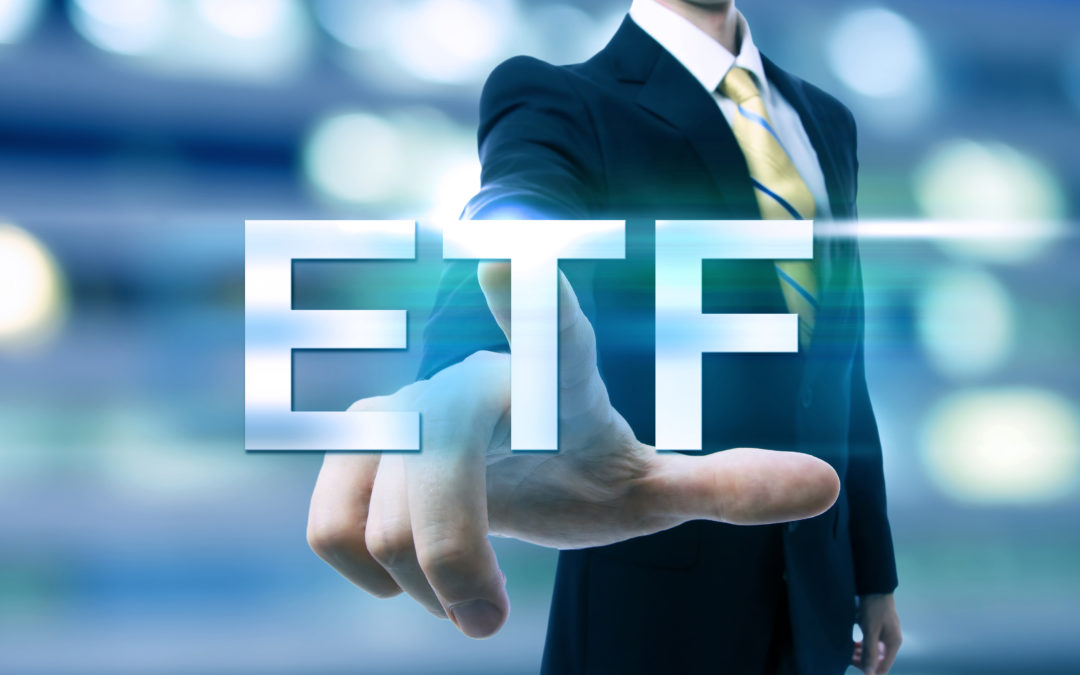As part of our new Wall Street 101 series, we explain how to invest in an ETF and answer some key questions investors have about exchange-traded funds.
So, you have decided to throw caution to the wind in an effort to build up your portfolio and you’re considering exchange-traded funds (ETFs). Or, perhaps you are looking to add income to your retirement.
If you have done any research at all, you’ll see there are a ton of investment options out there for you. You can also mix and match what you invest in and how you do it.
A popular vehicle for investment, especially for beginner investors, are exchange-traded funds, or ETFs.
In this article, we will answer some key questions about ETFs, such as what they are, whether they are good investments and how you can earn income from them.
How to Invest in an ETF: What is an ETF?
ETFs are just like stocks. They can be traded on the market, but ETFs allow you to do one thing that buying individual stocks cannot — be diversified.
 An ETF is just a bucket of equities that will track an underlying index. Instead of just one stock, ETFs can hold hundreds of stocks across different industries.
An ETF is just a bucket of equities that will track an underlying index. Instead of just one stock, ETFs can hold hundreds of stocks across different industries.
They are very similar to mutual funds, only they are listed on exchanges and shares of ETFs trade just like any other stock.
For example, the most popular ETF is the SPFR S&P 500 ETF (NYSE: SPY). It tracks the S&P 500 Index. Its holdings include Apple Inc. (Nasdaq: APPL), Amazon.com Inc. (Nasdaq: AMZN) and Microsoft Corp. (Nasdaq: MSFT).
If you were to invest in SPY, you would be diversifying your investment into all the different holdings that ETF has. To check the performance of your money, however, you only need to see how SPY is performing, not each individual stock inside it.
Knowing what an ETF is can help you figure out how to invest in an ETF (and we’ll address knowing in a bit).
Are ETFs Good Investments?
Well, that is a bit of a loaded question.
As with any stock or investment, there are things that are good about them and things that aren’t so good. ETFs are really no different.
The key, just like with any other type of investment, is doing your homework. There are ETFs out there for just about every sector — from cyber-security to smartphones and just about everything in between.
Find sectors that interest you and work from there (we’ll get to the different ETFs available in just a sec).
What Are the Benefits With an ETF?
Diversified: As we said above, ETFs allow investors to diversify their investments across different industries. If you wanted to invest in the top S&P 500 stocks, it would take a lot of money. However, you could still invest in those companies, but cheaper and broader with SPY.
Open Information: Unlike mutual funds, ETFs disclose their holdings every day. With mutual funds, that information is released to the public monthly or even quarterly, according to NerdWallet. With an ETF, you can search anywhere to find what a particular ETF is holding on any given day.
Taxes: With an ETF, you are typically taxed on capital gains when you sell, unlike mutual funds where you can be taxed over the course of the investment.
As you can see, there are solid benefits when you look at how to invest in an ETF.
What Are the Risks With an ETF?
Costly: Unlike with stocks, there can be management fees associated with an ETF. So while you may pay a commission — or in most cases now, you won’t — you may be subject to paying a management fee for owning an ETF, according to Investopedia.
Lower Dividend Yield: There are dividend-paying ETFs out there, which is great. However, because ETFs typically track a broader market, their overall dividend yield will likely average out to be lower than that of traditional dividend-paying stocks.
Settlement Issues: Most ETF sales are not settled for two days after a transaction. That means, if you sell your ETF position, your funds will not be available to reinvest for two days after you sell.
Just like with trading stock, there are risks when you look at how to invest in an ETF.
Different Kinds of ETFs
Just as the stock market is broad with its offerings, the popularity of ETFs has led to a broad range of funds to invest in.
According to Fidelity, here is a list of the various types of ETFs on the market and what they track:
- Market ETFs: Designed to track a particular index like the S&P 500 or Nasdaq
- Bond ETFs: Designed to provide exposure to virtually every type of bond available; U.S. Treasury, corporate, municipal, international, high-yield and several more
- Sector and industry ETFs: Designed to provide exposure to a particular industry, such as oil, pharmaceuticals or high technology
- Commodity ETFs: Designed to track the price of a commodity, such as gold, oil or corn
- Style ETFs: Designed to track an investment style or market capitalization focus, such as large-cap value or small-cap growth
- Foreign market ETFs: Designed to track non-U.S. markets, such as Japan’s Nikkei Index or Hong Kong’s Hang Seng index
- Inverse ETFs: Designed to profit from a decline in the underlying market or index
- Actively managed ETFs: Designed to outperform an index, unlike most ETFs, which are designed to track an index
- Exchange-traded notes: In essence, debt securities backed by the creditworthiness of the issuing bank; created to provide access to illiquid markets and have the added benefit of generating virtually no short-term capital gains taxes
- Alternative investment ETFs: Innovative structures, such as ETFs that allow investors to trade volatility or gain exposure to a particular investment strategy, such as currency carry or covered call writing
As you can see, when you start looking at how to invest in an ETF, there are tons of choices to consider.
How Investors Earn Income from ETFs
Because they are just like stocks or mutual funds, there are plenty of ways investors earn income from ETFs.
You have to consider an ETF to be something like a trust fund — it can invest in just about anything, from stocks to bonds to commodities. The money-making part comes down to how the individual investments in an ETF perform over time.
Here are some rules to look at when you look at how to invest in an ETF:
- Understand what you are investing in: This is a common rule of thumb when it comes to general investing, not just ETFs. We showed you above the different types of ETFs out there. But there are even more specific ETFs under those categories and some of them can be interesting, to say the least. Once you have chosen a sector to invest in, make sure you do your homework to know just what individual holdings an ETF you are interested in is actually holding.
- Watch your expenses: Not typically a big issue, although like we said above, some ETFs may come with management fees. Trading stocks and ETFs has become even cheaper than before as many brokerages are charging zero commission and zero fees to trade. But, just like with any other type of investment, know if there are any underlying or regular costs associated with a specific ETF investment.
- The long haul: Just like with stocks, ETFs suffer the fate of market swings and volatility. If you can’t deal with instances where your ETF investment is down 20%, then you really shouldn’t be investing. But, also similar to stocks, the market has a habit of correcting itself in the long run. So volatility today will likely correct itself to produce gains in the future. Keep that in mind as you start looking at investing in ETFs.
There you have it, Money and Markets’ comprehensive guide on how to invest in an ETF. We’ve included a lot of information because we want to make sure you know as much as possible before investing your money.
RELATED:
Top 5 ETFs to Buy in 2020
3 Hopeless ETFs Ranked From Disastrous to Poor — You Probably Own No. 1
Warren Buffett’s Favorite ETF Is Soaring
The ETF Market Will Be Stronger in 2020 and Here’s Why
What to Do When an ETF in Your Portfolio Closes
Vanguard Eliminates Commissions on Competitors’ ETFs
‘The Big Short’s’ Burry Has Found the Next Market Bubble





